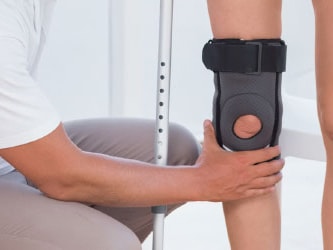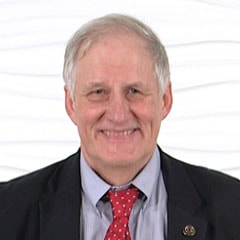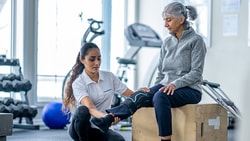When to Return to Sport? A Brief History of ACL Rehabilitation Approaches
July 11, 2016
5 min. read

In 1981, the staff of Cincinnati Sports Medicine provided a comprehensive article outlining knee rehabilitation after ACL reconstruction.1This article was well referenced and complete in many ways it was evidenced-based before that term existed. It referenced a five-phase progression of rehabilitation garnered through an international survey of knee experts with an 80% participation compliance. The article stated, The classic parameters of return to play do not indicate healing of ligament tissue and must not be substituted for time restraints. 2
"An Accelerated Rehab Regimen"
In 1990, that all changed. I was fortunate to work with Dr. Shelbourne in the 1980s while at the University of Indianapolis. He and Paul Nitz published Accelerated Rehabilitation after ACL Reconstruction in the American Journal of Sports Medicine in 1990.3This retrospective article compiled several years of observing and assessing outcomes of more than 400 individuals with a reconstructed ACL. In the early 1980s, they observed that patients who did not followthe time based approach outlined by the Cincinnati Sports Medicine study actually achieved earlier, and more complete, success in their rehabilitation and return to activities.
To uphold the findings, they followed these non-compliant individuals to becertain their accelerated approach did not lead to early failure or poor long-term outcomes. When it became clear that neither happened, they designed a new rehabilitation protocol that better matched what their non-compliant patients espoused. Their article concluded: Furthermore, comparative data from the two groups in this study population demonstrate that range of motion, strength, and function can be achieved by an accelerated rehabilitation regimen without compromising stability or putting the graft at risk.4
Faster = Better?
In 1992, the Journal of Orthopaedic and Sports Physical Therapy dedicated their June edition to the care of patients with ACL injuries. Several MD/PT teams presented their approaches to management within the context/comparison of the Shelbourne and Nitz protocol outlined above. Our teamprovided a historical comparison to an extra-articular surgery and how many of the accelerated concepts reflected the management applied in these cases.5Unfortunately, despitemany authors (surgeons and therapists) urging caution, the next several years devolved into a competition of shortening recovery times. Soon, clinicians promises of early return to activity replaced the notion of timeframes.
In 2000, the article Knee Ligament Rehabilitation discussed the implications of ACL ligament reconstruction.6The authors cite the work of Levine who demonstrated a neurogenic inflammation that lingers for several months after reconstruction.7They go on to propose, ...that some of the challenges seen in the first weeks and months following significant insult (injury or surgery) are related to this neurally mediated process.8
A Risky Strategy
In the past 10 years, greater attention to surgical technique and scrutiny of outcomes shifted focusaway from the expedited return to activities mantra. A Pittsburgh team led by Dr. Fu suggested surgeons carefully consider the orientation, impact, and restoration of anatomy during reconstruction.9 Recent work from this group outlines the loading seen in grafts after implantation and during rehabilitation.10It recommends greater direct loading to the graft when it is placed anatomically thus asking clinicians to consider if early rehabilitation should be less intense and less likely to improperly allow excessive loading.
Two recent articles focused on ACL re-injury upon returning to play. The MOON Consortium provided significant data to recommend specifics on graft use and guidelines for rehabilitation.11,12Paterno et al. followed a mixed cohort on return to play and provided concerning data that young females have about a 25% chance of a second ACL injury within the first year after returning to full participation.13Thisdata leads us to question our push for early return. However, there is no data that suggests waiting/delaying a return will alter the sequence. It may be that patients remain at risk regardless of rehabilitation time but we dont know as of now.
Predisposed for a Tear?
On the other hand, this data forces us to consider if certain changes would accomplish a safer return! Researchers are examining lower extremity function, and you may consider this when evaluating joint health. For more than 25 years we have noted that lower extremity function is not normal after ACL reconstruction. When we looked at a previously performed reconstruction, our data demonstrated significant long-term issues.14But, did these patients ever have a normal, quiet joint biomechanically, and thus metabolically?
Recently, authors askedthis question, especially with osteoarthritis being seen at a relative risk level of four times greater than age-matched controls.15Emerging answers are not reassuring as most measures show elevations of undesirable biomarkers and lack normalization of basic functional assessments.16,17Graft ligamentization is a long term process with hamstring grafts re-organizing slower (12-24 months) than patellar tendon (6-12 months). Both processes exceed the often cited 6-month return to sport.18
Slow Down!
We recently completed a tightly controlled follow-up study of a standard ACL protocol and one including the addition of neuromuscular stimulation with 25 subjects in each group. At the end of 6 months, only one subject in each group exceeded the return to play criteria we advocate. In 1966, songwriter Paul Simon wrote, slow down you move too fast, maybe its time we follow his advice.





